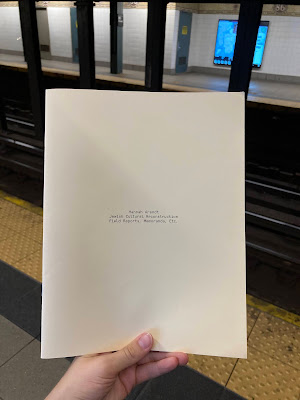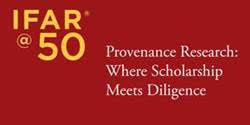 |
| Apulian vases Antikensammlung Berlin - Accession no. 1984.39-59 |
Anyone who admires the moveable heritage of Magna Graecia and Apulian red-figure artefacts in particular, and who has visited the Altes Museum located on Berlin's Museum Island will likely have come across "their" phenomenal set of grave artefacts dating back to the 4th century BCE. Extremely carefully executed and very elegant, the grouping are housed together in one extremely large glass showcase. The so-called Phrixos crater, a volute crater with mask handles and the Rhesos crater, a high volute crater with three-wheel handles has been attributed to the Darius painter. The Persephone crater, a volute crater with spiral handles, the Gigantomachie crater, a volute crater with mask handles and the Priamiden-Krater are ascribed to the painter of the Underworld. Two other volute craters with mask handles are attributed to the Loebbecke painter and the painter from Copenhagen,
What makes this group spectacularly surprising is not that these strikingly beautiful artefacts are believed to possibly represent a single burial grouping, used to furnish a rich chamber tomb north of Taranto, Italy, but rather, that at the time of their purchase, no one seemed even a smidge concerned about the improbability of their purported provenance. Or, that years later, they continue to be displayed in Germany, and not in Italy, despite longstanding proof, now two decades old, that demonstrate their likely illicit origins.
In the late 1980s, taking Christoph Leon, an Austrian archaeologist-turned-dealer living in Basel at his word, the director of the Berlin archaeological museum (at the time located in West Germany), Wolf Dieter Heilmayer, purchased the grouping of artefacts while completely ignoring the red flags in Leon's implausible story. Despite having no proof whatsoever, beyond the word of the restorer, Fiorella Cottier-Angeli, who relayed that she had put the vases back together and they had been found in fragments in very old chests belonging to a Swiss family named Cramer, and had reached Geneva "in the nineteenth century," Heilmayer quickly shelled out 3 million marks without demanding any substantiating proof that the artefacts he was purchasing had, in fact, left Italy and entered into Swiss territory before Italy's law n.364 of 1909, entered into force.
Likewise, neither Wolf Dieter Heilmayer, nor Luca Giuliani, curator of the German archaeological museum at the time, seemed interested in questioning the flimsy backstory of how such a large grouping of funerary artefacts could have ended up smashed into bits and stashed into said trunks.
Did the purported Cramer family have all their ancient treasures lined up on one overloaded shelf that at some point in history came crashing down? And did said nineteenth century family conveniently have the foresight to stow each and every swept up fragment into trunks in the hopes that years later, someone like Ms. Cottier-Angeli might put them all back together again like some precious group of Apulian Humpty Dumpties?
Flash forward to September 13, 1995 when alarm bells really sounded.
On that date, Swiss authorities notified Giacomo Medici that they would execute a search warrant at his storage facilities/office of Editions Services located on the fourth floor of the Ports Francs & Entrepôts de Genève, specifically Corridor 17, Room 23. There, a search party consisting of a Swiss magistrate, three Swiss police, headed by an inspector, three Carabinieri TPC officers, an official photographer, and the deputy director of the Ports Francs & Entrepôts de Genève seized and documented contradictory evidence to the provenance story provided for the Berlin tomb-group artefacts.
Carefully recorded by Medici were three sets of Polaroid images, depicting four of the artefacts purchased earlier by Heilmayer for the German museum's collection:
one grouping of fifteen photographs,
one grouping of six photographs,
and one grouping of two photographs.
The preponderance of this evidence seems to contradict the fabricated provenance given to the museum, which made no mention of the antiquities dealer who at that point found himself embroiled in a complex investigation by the Swiss and Italian authorities.
Jumping forward to the last two years.
On 11 October 2021, Alessandro Arturi, the judge of the preliminary investigations at the Court of Rome, ordered the confiscation of all 21 of the Berlin museum's tomb-group artefacts sold by Leon. In his ruling Arturi, cited Jacques Chamay, at the time director of the archaeological museum in Geneva (who displayed the vases at the time of they were offered for purchase), and Fiorella Cottier Angeli's well known and fully established complicity with the by now-convicted antiquities dealer Giacomo Medici. And in describing the photographic evidence in the seized Medici archive, the judge spelt out clearly that the Polaroids in the archive depict four of the craters in the Berlin museum "first in the condition of mere fragments soaked in earth, then in the subsequent phases of restoration, up to their current integral recomposition."
Which leads me to the next question...
Dr. David Gill has been writing about his concerns regarding these vases for years, see articles here and here. The Italian authorities have thoroughly researched their problematic provenance and have documented evidence suggesting they were extracted illegally from Italian soil and exported without the benefit of an export license to Switzerland. All of which begs the question of why, a quarter of a century later, Italy has needed to resort to a court ruling, to put pressure on Germany to get on board and consider relinquishing the Apulian funeral pieces.
What is known is that the Italian Ministry of Justice, perhaps having lost patience, has launched an international rogatory, to which Germany has yet to formally reply.
 2026 Postgraduate Certificate Programmes,antiquities,antiquities looting,ARCA Art Crime Scholarship,art crime,illicit cultural property,illicit trafficking,Looting,museum security,provenance
2026 Postgraduate Certificate Programmes,antiquities,antiquities looting,ARCA Art Crime Scholarship,art crime,illicit cultural property,illicit trafficking,Looting,museum security,provenance
 No comments
No comments































